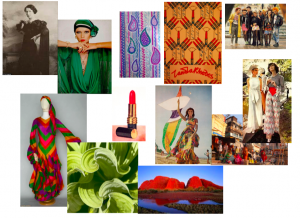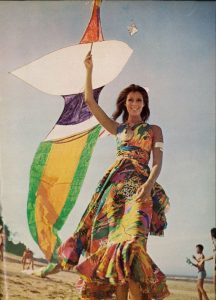The setting for this advert appears to be outside with a luxury car. The male in it is fully dressed in a smart tweed suit, as though he could be outside a drinks party or restaurant. His appearance also suggests he is a respectable, upstanding man – perhaps someone with a high powered job. The women however is only in her underwear and being pulled across the bonnet of the car. The difference in the fact he is dress and she isn’t already indicates a difference in respectability or maybe even social standing.
This firstly flags up the ethical issue of social class differences and the fact the image appears to be supporting this.
The body language also hints towards this. He is standing over her and almost throttling her with his tie. An ethical issue as well because of the on going issues of domestic abuse from domineering men. You cannot tell from this image her facial expression as well as where this is her choice or not. Obviously some people like this sort of ‘role play’ but wether there is enjoyment or not in this image it is impossible to tell. So it begs the question why is it used? What other message is the mage trying to put across to the public?
The use of that look like a luxury car also plays a part. It had to the feeling of the man being strong and powerful and the women one of his play things – like the car.
Domestic violence, sexual violence, social standing are all ethical issues that need to be taken into account when looking at this image. Of course it is just a harmless image in the fact the women isn’t actually being throttled. But what message could it be suggesting to the public as a whole. It seems to be normalising dominance of women and quite possibly in a sexual manner. A study of ‘Sexual violence in the Media’ “suggests that certain cultural factors (including mass media) and individual variables interact to affect some people’s thought patterns and other responses that may lead to antisocial behaviour, including aggression” (Malamuth, N. M. and Briere, J. (1986). This article certainly seems to suggest that constant exposure to sexual violence in the media may actually be being repeated in the actions of real people.
Although this is just an advert, the ethical issues behind it are quite severe. The need to have this composition in an advert is unclear. There are a million other ways to promote a brand. What is clear is the possible harmful message it is conveying – the normalisation of male domination and sexual violence.
Malamuth, N. M. and Briere, J. (1986), Sexual Violence in the Media: Indirect Effects on Aggression Against Women. Journal of Social Issues, 42: 75–92. doi:10.1111/j.1540-4560.1986.tb00243.x




![Photo of dog Skin infiltrated by cancer. James E. Hayden in 2003 [1]](http://blog.soton.ac.uk/rcs/files/2017/10/Screen-Shot-2017-10-18-at-14.01.22-223x300.png)
![Photo of Tiger shark skin from cracked.com 2017. [2]](http://blog.soton.ac.uk/rcs/files/2017/10/Screen-Shot-2017-10-18-at-14.00.12-300x235.png)
![The printed replica of 3D printed denticles from BBC News 2017. [3]](http://blog.soton.ac.uk/rcs/files/2017/10/Screen-Shot-2017-10-18-at-14.02.22-300x168.png)
![Sharkskin weave pattern diagram from Seth Winner blog 2011 [4]](http://blog.soton.ac.uk/rcs/files/2017/10/Screen-Shot-2017-10-18-at-14.03.15-300x263.png)